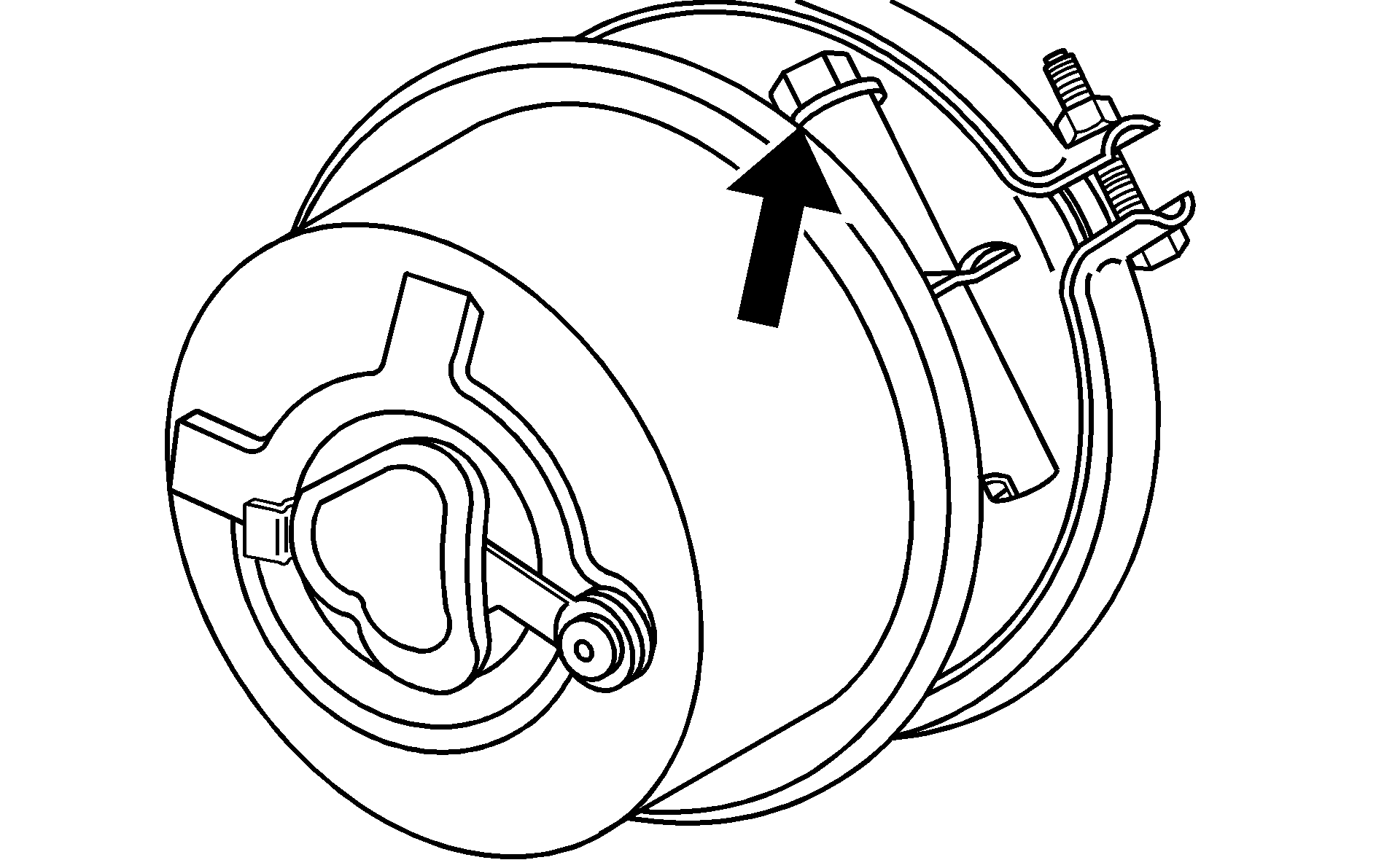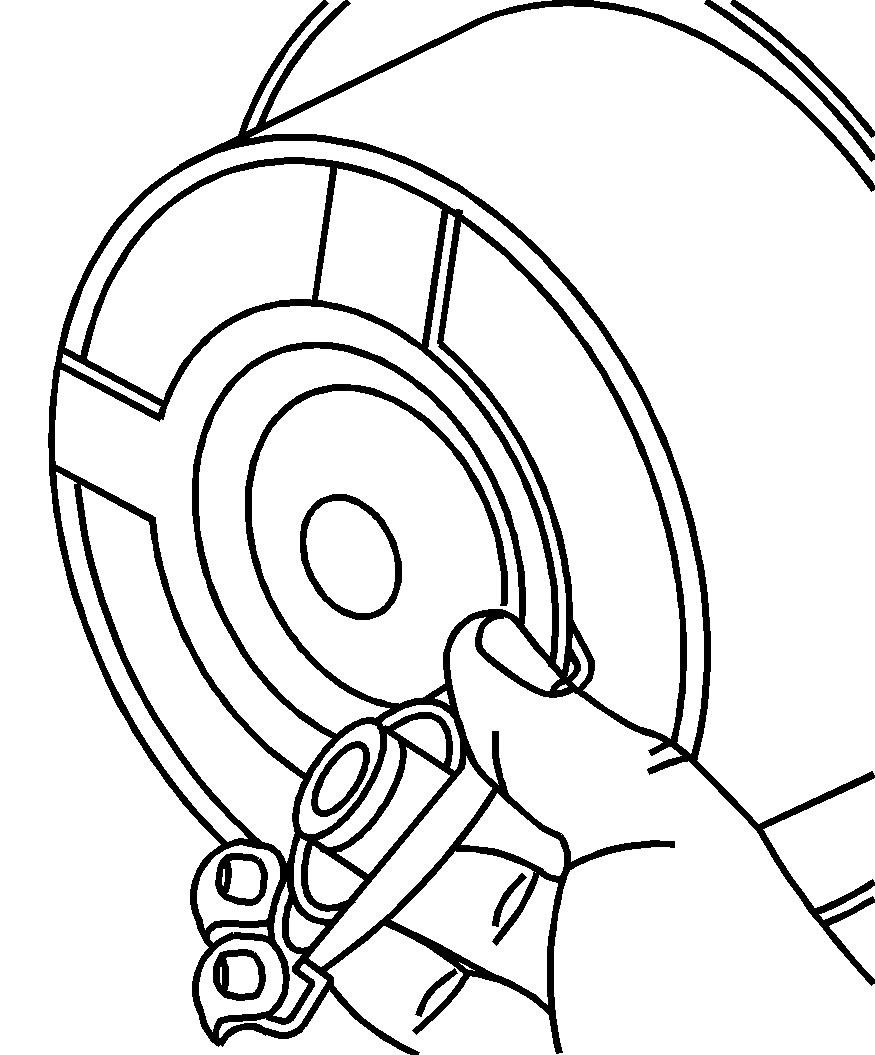Caution: To help avoid serious personal injury to you or others:
• Never let passengers ride in a vehicle that is being towed. • Never tow faster than safe or posted speeds. • Never tow with damaged parts not fully secured. • Never get under your vehicle after it has been lifted by the tow
truck. • Always secure the vehicle on each side with separate safety chains
when towing it. • Working on air brakes without first using the release studs to
compress the springs can lead to injury. Never work on the air brakes chambers
without first using the release studs to compress the brake springs. • When the brake springs are manually compressed, you will have
no brakes. Release your air-operated parking brakes manually only to tow the
vehicle. Never drive the vehicle with the brakes released.
Before you do anything, turn on the hazard warning flashers (if they have not been damaged).
When you call, tell the towing service:
| • | That your vehicle has rear-wheel drive. |
| • | The make, model and year of your vehicle. |
| • | Whether you can still move the shift lever. |
| • | If there was an accident, what was damaged. |
When the towing service arrives, let the tow operator know that this manual contains towing instructions. The operator may want to see them.
Here are specific towing instructions:
Towing Your Vehicle From the Front (Front Wheels Off the Ground)
Before Towing
Block the rear wheels of the disabled vehicle. On vehicles with air brakes, release the emergency brake system by compressing the brake chamber springs as outlined in this section. (This is to prevent the possibility of the emergency brake being applied during towing.)
On vehicles with hydraulic brakes, release the parking brake fully by moving the lever to the fully-released position.
Towing the Vehicle with the Front Bumper Removed
- Remove the front bumper.
- Connect and lock the lift chains to the front axle, outside of the spring anchor plates as shown.
- Connect the lift chains to the tow bar and raise the tow bar until lift chain slack has been taken up.
- Raise the vehicle to the required height.

Rear Axle
- Disconnect the propshaft at the rear axle.
- Secure the propshaft to the frame or the crossmember.
After Towing
- Block the rear wheels and install the axle and propshafts.
- Check for proper phasing of universal joints.
- Apply the emergency brake system before disconnecting from the towing vehicle.
- Check and fill the rear axle with oil as required.
Towing Your Vehicle From the Front (All Wheels On the Ground)
Your vehicle may be towed on all wheels provided the steering is working. Remember that the power brakes and power steering will not have power assist. Vehicles with air brakes will not have brakes. There must be a tow bar installed between the towing vehicle and the disabled vehicle.
Before Towing
Block the wheels of the disabled vehicle. On vehicles with air brakes, release the emergency brake system by compressing the brake chamber springs as outlined in this section. (This is to prevent the possibility of the emergency brake being applied during towing.)
On vehicles with hydraulic brakes, release the parking brake fully by moving the lever to the fully-released position.
If there is damage or suspected damage to the axle(s), remove the axle shafts. Cover the hub openings to prevent the loss of lubricant or entry of dirt or foreign objects.
After Towing
- Block the rear wheels and install axle and propshafts.
- Check for proper phasing of universal joints.
- Apply the parking brake system before disconnecting from the towing vehicle.
- Check and fill rear axle with oil as required.
Towing Your Vehicle From the Rear (Rear Wheels Off the Ground)
Before Towing
Secure the steering wheel to maintain a straight-ahead position. Make certain that the front axle is not loaded above the front axle Gross Axle Weight Rating (GAWR) as indicated on the vehicle's Gross Vehicle Weight Rating (GVWR) label. See Loading the Vehicle for more information.
After Towing
- Block the rear wheels and release the steering wheel.
- Apply the parking brake system before disconnecting from the towing vehicle.
- Check and fill the rear axle with oil as required.
Releasing Air-Operated Parking Brakes
If your vehicle has air brakes, you could have a special towing problem. If your vehicle has to be towed because of a complete loss of air pressure from both systems, the parking brakes will have automatically engaged. The tow operator can release the brakes manually by using the following steps. Then your vehicle can be towed with all wheels or only the rear wheels on the ground.
- Block the wheels of the vehicle.
- Remove the release stud and nut from the side of the brake chamber. Some chambers have studs which are visible at all times.
- Remove the rubber cap from the rear of the chamber.
- Put the release stud, nut and flat washer into the chamber.
- Turn the stud clockwise one quarter of a turn.
- Turn the stud nut clockwise several turns to release the brakes. Follow the same procedure to release the other brake.
- At the repair facility, apply air pressure of at least 70 psi (480 kPa) to the brake chambers, either from an external air supply or the vehicle's air system.
- Turn the stud nut counterclockwise several turns. Remove the stud from the chamber.
- Replace the stud and washer and tighten the nut into the side of the chamber.
- Replace the rubber cap.



